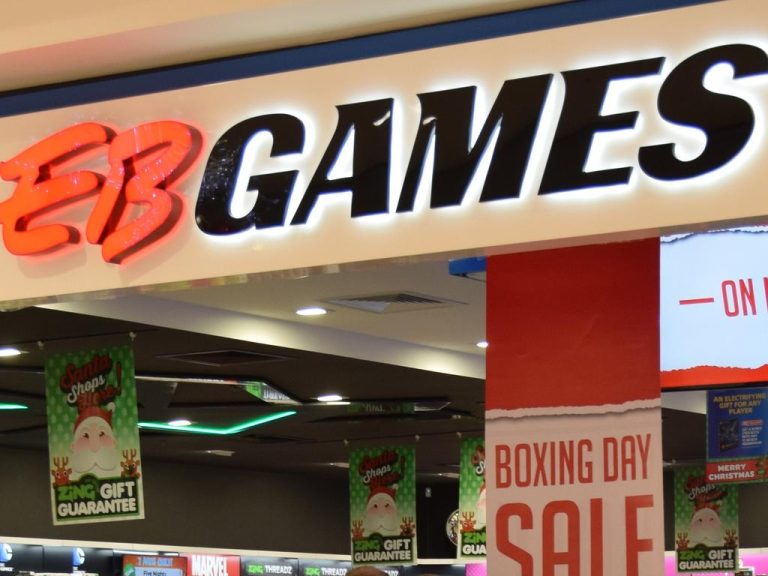Is the supermarket battle for real estate hurting customers at the checkout?
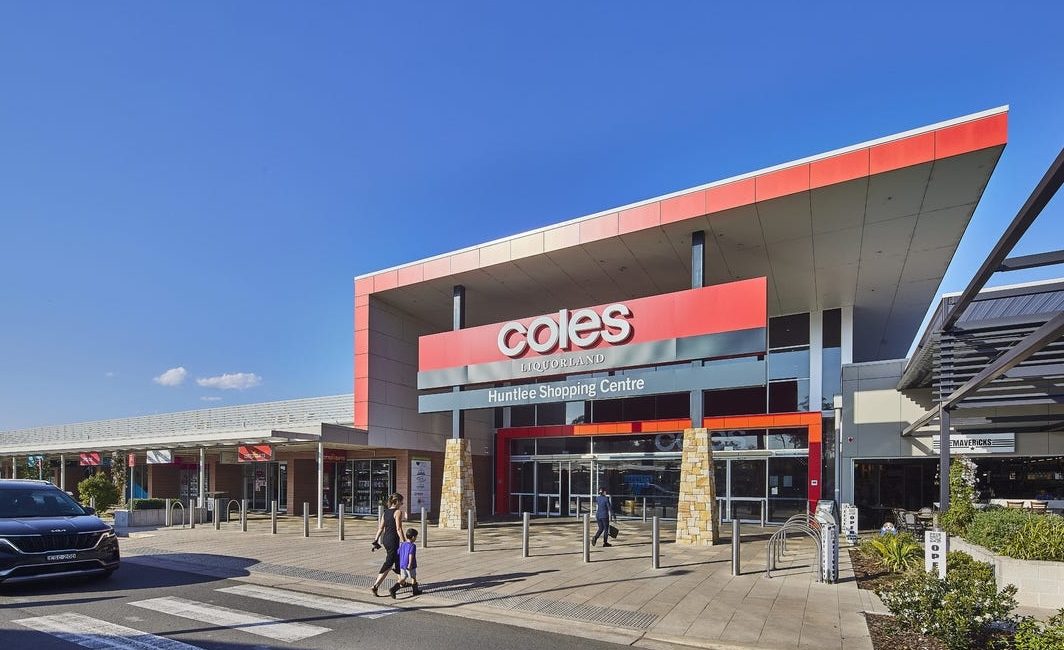
A struggle to secure prime real estate could be keeping other players out of the supermarket sector, and it may be costing shoppers.
More competition in the supermarket sector would lower grocery prices, but Australia’s challenging market makes it tough for another player to establish themselves, experts say.
The lack of suitable supermarket sites and strong competition for those that hit the market, as well as high development costs, means new entrants would need a sizeable bankroll, a healthy risk appetite and perseverance to succeed in the Australian market, according to retail researchers.
And while a handful of big overseas retailers have tried, and failed, to break into Australia’s highly concentrated supermarket sector, industry experts say any new player would meet a similar fate if they tried to replicate the business models of the majors that dominate the market.
Woolworths and Coles collectively control about two thirds of Australia’s supermarket industry, while Aldi has about 10% market share.
The balance is mostly held by Metcash with its IGA and Foodland brands, and smaller independents, while big-box retailer Costco has an emerging presence.
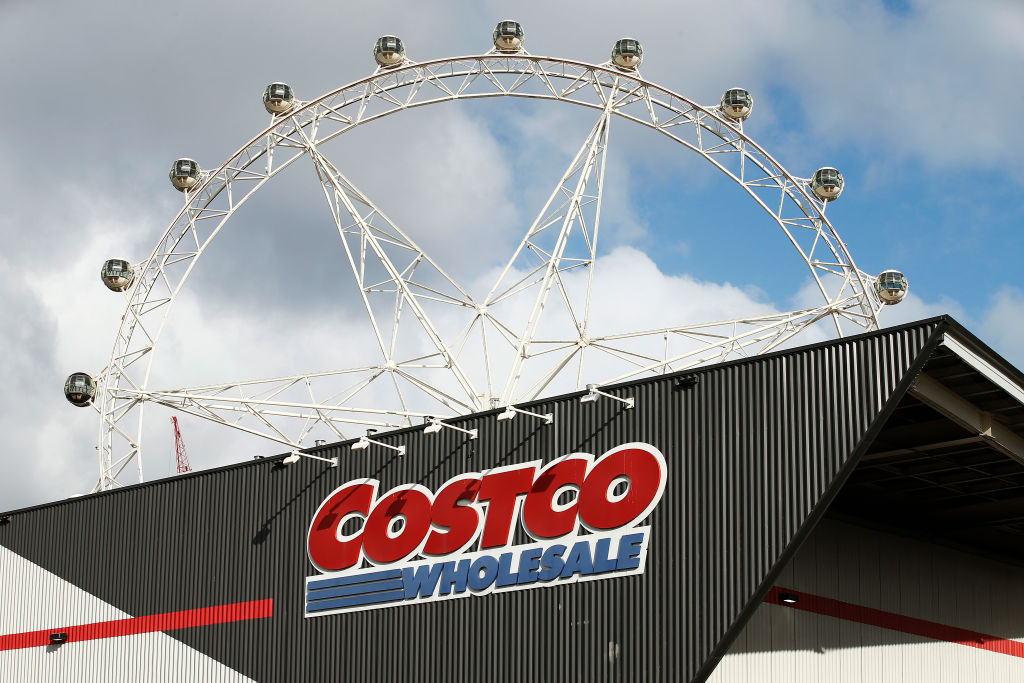
Costco has 15 Australian stores and big expansion plans. Picture: Getty
It’s rare for new brands to enter Australia’s supermarket sector, which is the subject of an ACCC inquiry into pricing and competition amid the ongoing cost of living crisis.
But retail and consumer behaviour expert Professor Gary Mortimer of Queensland University of Technology said it wasn’t impossible for outsiders to gain a foothold, and more brands would benefit consumers at the checkout.
“Any extra players into a market will always improve competition and lower prices,” he said.
“It is possible for other players in the food and grocery sector to enter the market. Aldi did so very effectively a little over 22 years ago.”
“But if you’re going to enter any market, you need to have a clear point of difference,” he said.
Much of Aldi’s early success was due to its ability to capitalise on a gap in the low-cost grocery sector, Prof Mortimer said.
“Aldi’s success came off the back of Franklins’ failure. Franklins was traditionally a smaller format food and grocery store that often sat inside a shopping centre, and because of their size, they were able to grow across the nation. When Franklins collapsed, Aldi saw that as an opportunity.”
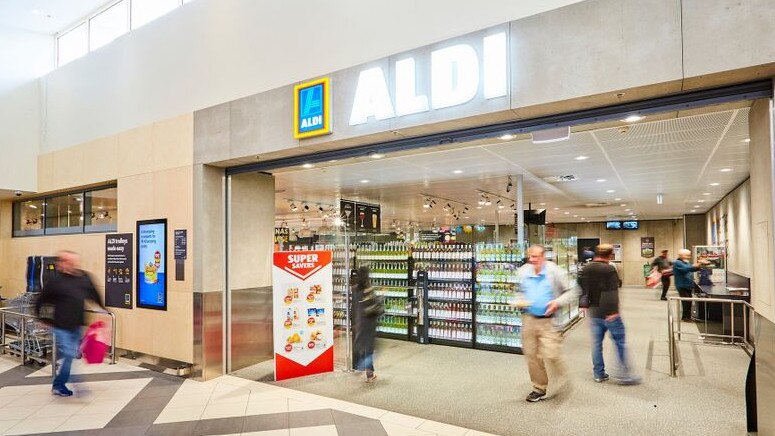
Aldi’s smaller format has allowed it to capitalise on a wide variety of sites.
However, the German discount supermarket chain’s flexible store format, with stores typically half the size of Woolworths or Coles, helped facilitate its rapid expansion, Prof Mortimer said.
“Having a smaller format business enables you to access more viable sites, whether that’s in a marketplace style establishment, where it’s within an existing shopping centre or a small standalone operation with a small car park,” he said.
Aldi’s success stands in contrast to attempts by other retailers such as Kaufland, which abandoned its Australian plans in January 2020 after securing sites for two dozen stores and developing a distribution centre, having invested more than half a billion dollars into its foray down under.
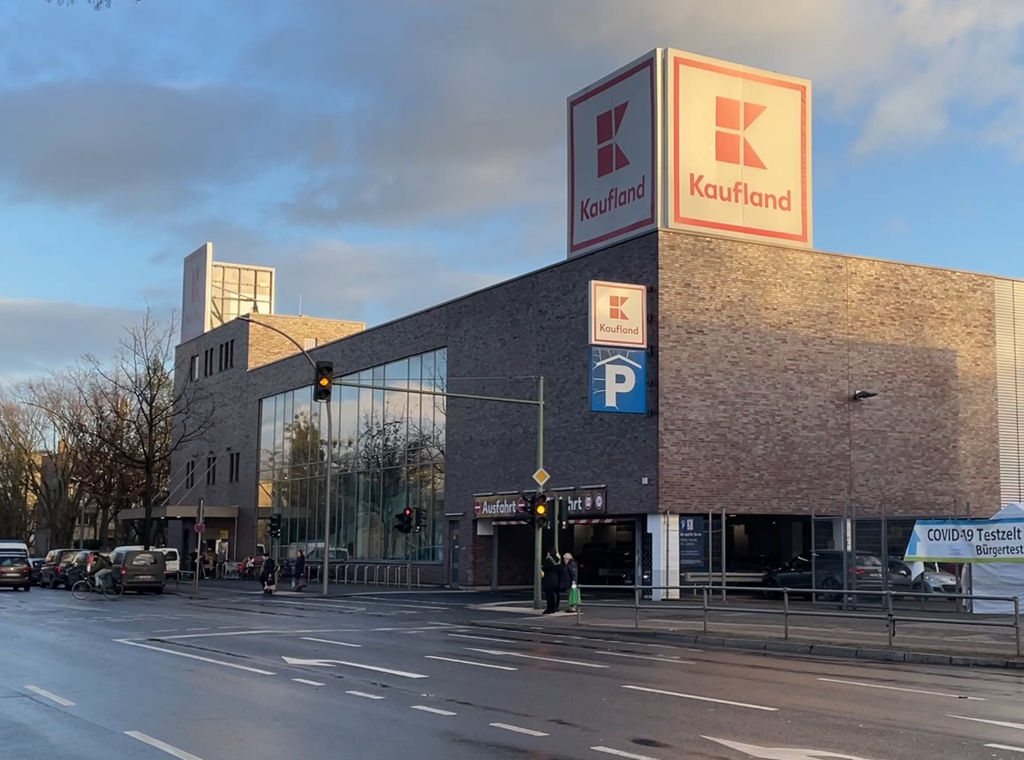
German retailer Kaufland purchased dozens of large sites with intentions to transfer its big-box concept from Europe, only to exit the Australian market without opening a single store. Picture: Getty
The company said it withdrew to focus on its European operations, but according to industry sources, a combination of Kaufland’s need for enormous, yet scarce 20,000sqm-plus sites to facilitate its “hypermarket” concept and the company’s desire to own, rather than lease real estate stymied its expansion plans.
Agile brands capitalise on small stores in convenient locations
Consumer behaviour expert and Deakin University senior lecturer Dr Paul Harrison said Australia’s relatively small grocery sector made it hard for overseas retailers to crack into the Australian market.
“The difficulty is that we’ve got a small population in comparison to the rest of the world,” he said. “There aren’t a lot of opportunities for other retailers to establish themselves.”
“One of the critical elements is going to be the availability of real estate, but it’s also going to be a bunch of things built around the concept of convenience, which is really a perception as opposed to a location.”
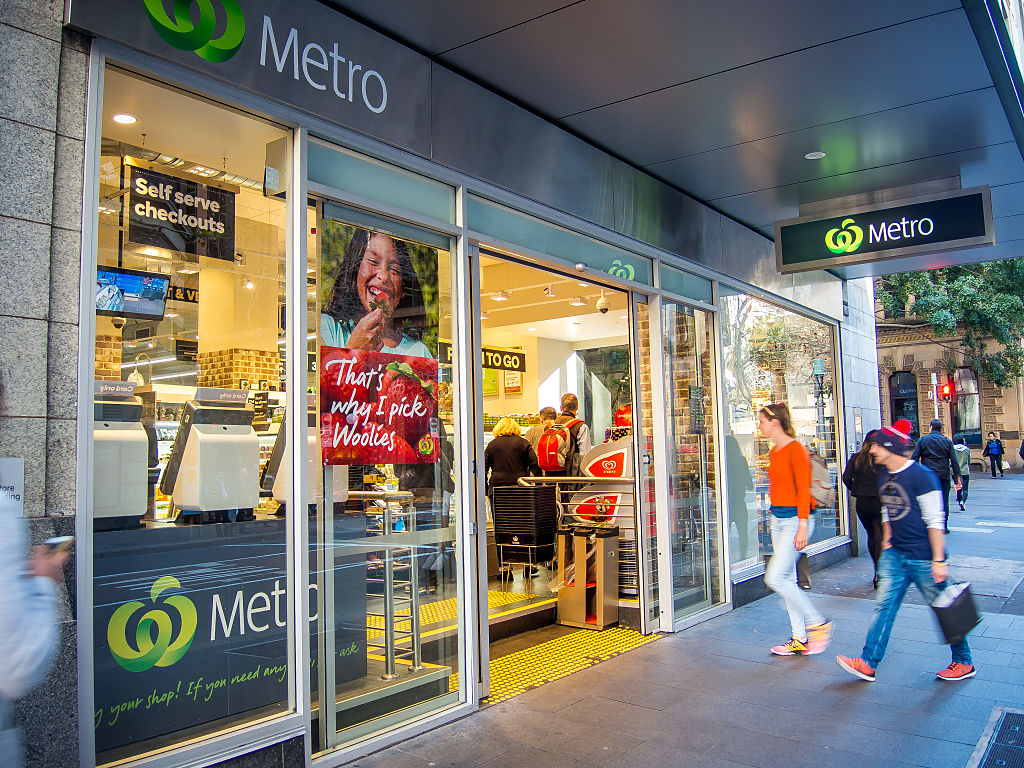
Woolworths plans to open almost as many Metro stores as full-size supermarkets in the coming years. Picture: Getty
Colliers head of retail leasing Michael Tuck said competition for real estate, especially in hotly contested CBD markets, was causing supermarket brands to become more agile in their approach to securing sites, leading to more convenience-driven stores positioned to target commuters.
“As a general rule of thumb most of the big brands like to buy [rather than lease],” he said. “However, in CBD environments it’s more difficult to purchase the right strata or asset, and it’s harder to come by tenancy sizes big enough to accommodate larger supermarket formats,” he said.
“Most supermarket brands have had a crack at CBD’s in a range of size configurations from larger format to smaller convenience grand-and-go models, and we’re seeing the convenience model working best in the CBD as it’s better aligned with a CBD commuter consumer’s requirements.”
Supermarkets ‘beef up’ property development
An industry source said the major supermarket brands had recently “beefed up” their development teams and were increasingly looking for infill sites in high density areas.
“Aldi, Coles and Woolies are all out there looking at every single site they can,” the source said. “They don’t need to show a return, they just need to show it’s a good site and the supermarket sales justifies the fact that they can develop it themselves.”
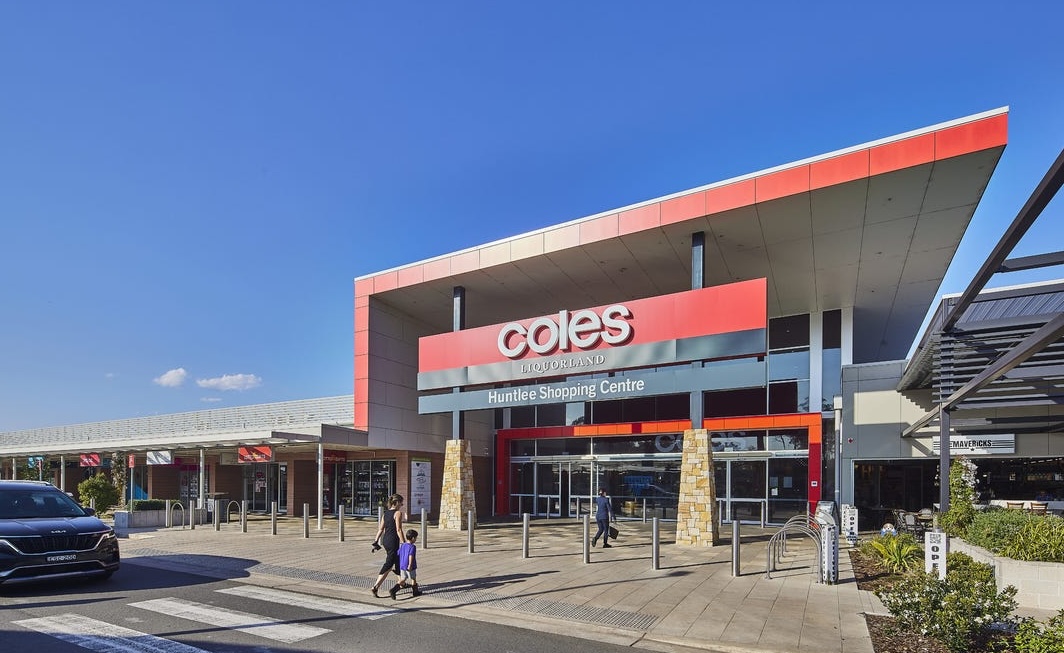
In January Coles sold its Huntlee shopping centre in a development corridor west of Newcastle, remaining as the anchor tenant. Picture: realcommercial.com.au/sold
While Woolworths has been developing stores for decades, a spokesperson said the majority of its stores were leasehold.
“We invest heavily in improving existing stores for local customers but also develop sites ourselves to maximise amenity for customers,” the spokesperson said.
Woolworths’ total stores grew by nine over the past six months, but the company has plans to open up to 20 new supermarkets and 15 new Metro food stores in the next three to five years, the spokesperson said.
Meanwhile, Coles opened 17 new supermarkets over the 2023 financial year, and Metcash closed eight IGA supermarkets and opened 18 new stores over the six months to October 2023.
Both Woolworths and rival Coles have recently turned to residential real estate, with several developments underway that feature supermarkets within mixed-use buildings including apartments and offices.
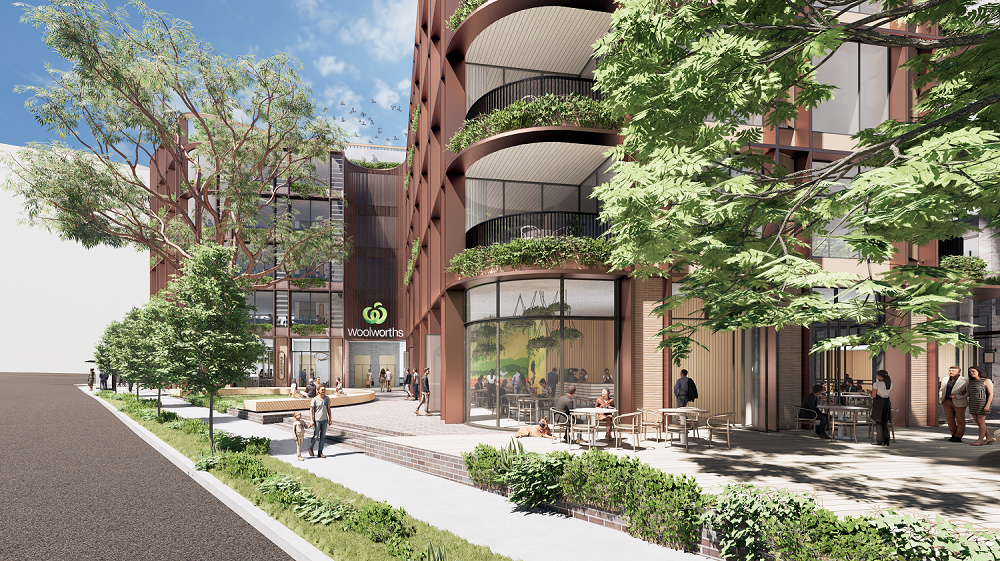
Woolworths is proposing to develop 124 apartments above its supermarket at its Waterloo mixed-use project in Sydney. Picture: supplied
PropTrack economist Anne Flaherty said high constructions costs and interest rates had caused retail development activity to slow, and more retail sites would be developed if costs weren’t so high.
“Even though there has been a sharp decline in per capita retail spend over the past year, total retail spend has been quite resilient as a result of strong population growth,” she said.
Essential retailers such as supermarkets were positioned to benefit from a rising population, particularly in growth regions, Ms Flaherty said.
“The high cost of living is leading people to cut back on their discretionary spending, but spending on essential retail items such as groceries is more resilient.”
While Aldi, Costco and Kaufland have all tried to capture the discount grocery sector to varying degrees, Mr Harrison said the next successful entrant may well be a premium offer, provided they could tap into the motivations of those currently shopping at the major brands rather than simply transfer a model that was successful overseas.
“The mistake that often happens is people have that ‘build it and they will come’ mentality, rather than having the diagnostic mentality and thinking ‘who are these people and where is the best place to put this?’.”
“A lot of the time we see with businesses it’s perseverance, service quality and whether they’re meeting the expectations of the target market,” he said.

